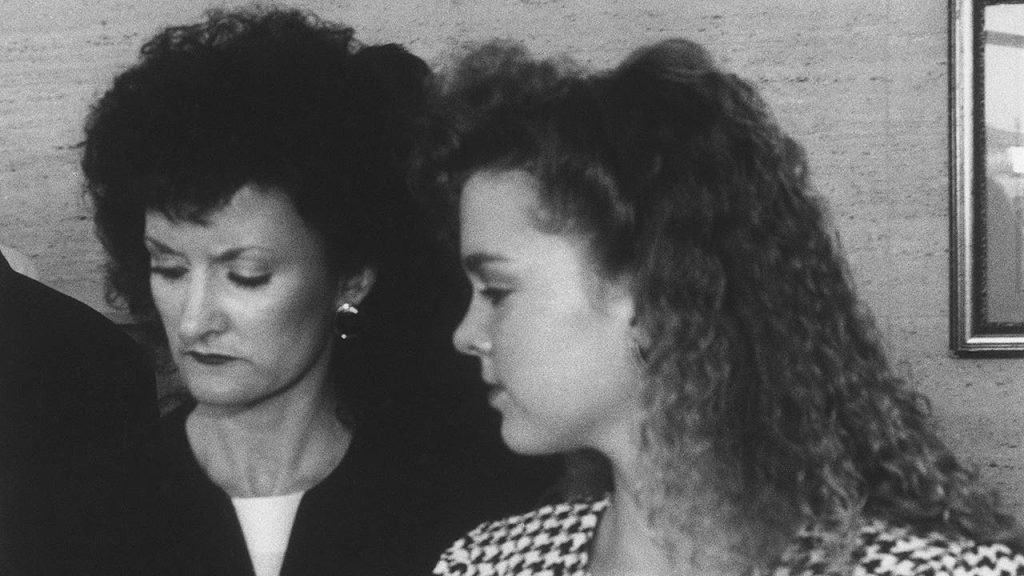In 1991, the quiet community of Channelview, Texas, became the epicenter of a sensational case that captivated the nation: the “Pom-Pom Mom” scandal. Wanda Holloway, a seemingly devoted mother, was accused of plotting to murder the mother of her daughter Shanna’s cheerleading rival. The incident stemmed from the intensely competitive world of youth cheerleading, where Shanna, despite her initial interest, struggled to secure a spot on the squad. Wanda, reportedly fixated on her daughter’s success, allegedly blamed Verna Heath and her daughter Amber for Shanna’s setbacks. Believing that eliminating Heath would pave the way for Shanna’s cheerleading ambitions, Wanda allegedly approached her former brother-in-law, Terry Harper, to arrange a hit. Harper, however, alerted authorities, leading to Wanda’s arrest and subsequent trial, which dominated headlines and painted a disturbing portrait of ambition gone awry.
The trial and its aftermath had a profound and lasting impact on Shanna Holloway, then just 14 years old. The intense public scrutiny, coupled with the emotional turmoil of her mother’s arrest and conviction, left deep scars. Shanna describes a childhood shrouded in silence, where the incident was treated as a taboo subject, forcing her to suppress her emotions and trauma. This suppression manifested in physical and mental health issues, including anxiety, stomach problems, and suicidal thoughts. The weight of the unspoken trauma haunted her for decades, impacting her ability to navigate everyday life, from attending school pep rallies to simply hearing the word “pom-pom.” She felt trapped in a cycle of pain and silence, unable to process the events that had so dramatically altered her life.
For almost two decades, Shanna carried the burden of her past in silence, internalizing the trauma and enduring its debilitating effects. From the age of 14 to 33, she avoided discussing the incident, adhering to an unspoken family rule that swept the painful experience under the rug. This suppression, however, took a significant toll on her well-being, manifesting in various physical and psychological ailments. She experienced debilitating anxiety, constant stomach issues, and persistent headaches. The emotional toll culminated in suicidal thoughts, a stark testament to the profound impact of the unaddressed trauma. It wasn’t until a breakdown at age 33, sobbing uncontrollably on her kitchen floor, that Shanna finally acknowledged the devastating impact of her suppressed emotions. This realization marked a turning point, prompting her to seek professional help and embark on a journey of healing and self-discovery.
Shanna’s journey toward healing began with seeking professional counseling, a crucial step in confronting the long-suppressed trauma. Therapy provided a safe space for her to finally address the events of her past and their impact on her life. It encouraged her to break the silence that had enveloped her family for years, giving voice to the emotions she had bottled up for so long. This process of confronting her past, while painful, proved to be transformative. It empowered her to reclaim her narrative and begin the process of healing. The experience also inspired her to help others facing similar struggles. She launched a website, Smile More Worry Less, offering online courses and resources for individuals battling depression and seeking support.
Shanna’s decision to publicly share her story, including her participation in the Investigation Discovery docuseries, “The Texas Cheerleading Murder Plot,” was met with resistance from her family. Some members expressed strong disapproval, even threatening legal action to prevent her from speaking out. Shanna, however, recognized the importance of sharing her experience, not only for her own healing but also to offer hope and support to others struggling with trauma. She emphasized that her intention wasn’t to reopen old wounds or cause harm but rather to demonstrate that healing and recovery are possible, even after experiencing profound adversity. Her willingness to speak out despite the opposition highlights her courage and determination to break the cycle of silence and help others find their own paths to healing.
Today, Shanna has rebuilt her life, finding a measure of peace and healing after years of struggle. While acknowledging that she may never be fully “100%,” she emphasizes the significant progress she has made in overcoming the anxiety and emotional burdens that once plagued her. The ability to wake up without the constant weight of anxiety on her chest, a feeling she had grown accustomed to since the age of 14, represents a significant victory. Her relationship with her parents has also improved as a result of open communication and a shared willingness to address the past. Shanna’s story serves as a testament to the resilience of the human spirit and the transformative power of confronting trauma. By sharing her experience, she offers hope and encouragement to others who may be silently battling their own demons, demonstrating that healing is possible and that speaking out can be a powerful catalyst for change.

